Planting Potatoes in Grow Bags: Imagine harvesting a bounty of fresh, homegrown potatoes right from your patio or balcony! No sprawling garden needed. Sounds too good to be true? It’s not! I’m going to show you how easy and rewarding it is to grow your own spuds using grow bags.
Potatoes have a rich history, dating back thousands of years to the Andes Mountains. They’ve become a staple food in countless cultures, and now, you can easily cultivate them yourself, regardless of your space constraints. For centuries, growing potatoes required dedicated garden plots, but with the advent of grow bags, urban gardening has never been more accessible.
Why should you try this DIY trick? Well, for starters, it’s incredibly space-saving. If you’re like me and live in an apartment or have a small yard, grow bags are a game-changer. Plus, planting potatoes in grow bags offers better drainage and aeration compared to traditional in-ground planting, leading to healthier, more productive plants. You’ll avoid common potato problems like soilborne diseases and pests. And the best part? Harvesting is a breeze! No more digging around in the dirt – simply tip the bag and collect your delicious, homegrown potatoes. Let’s get started and transform your small space into a potato paradise!
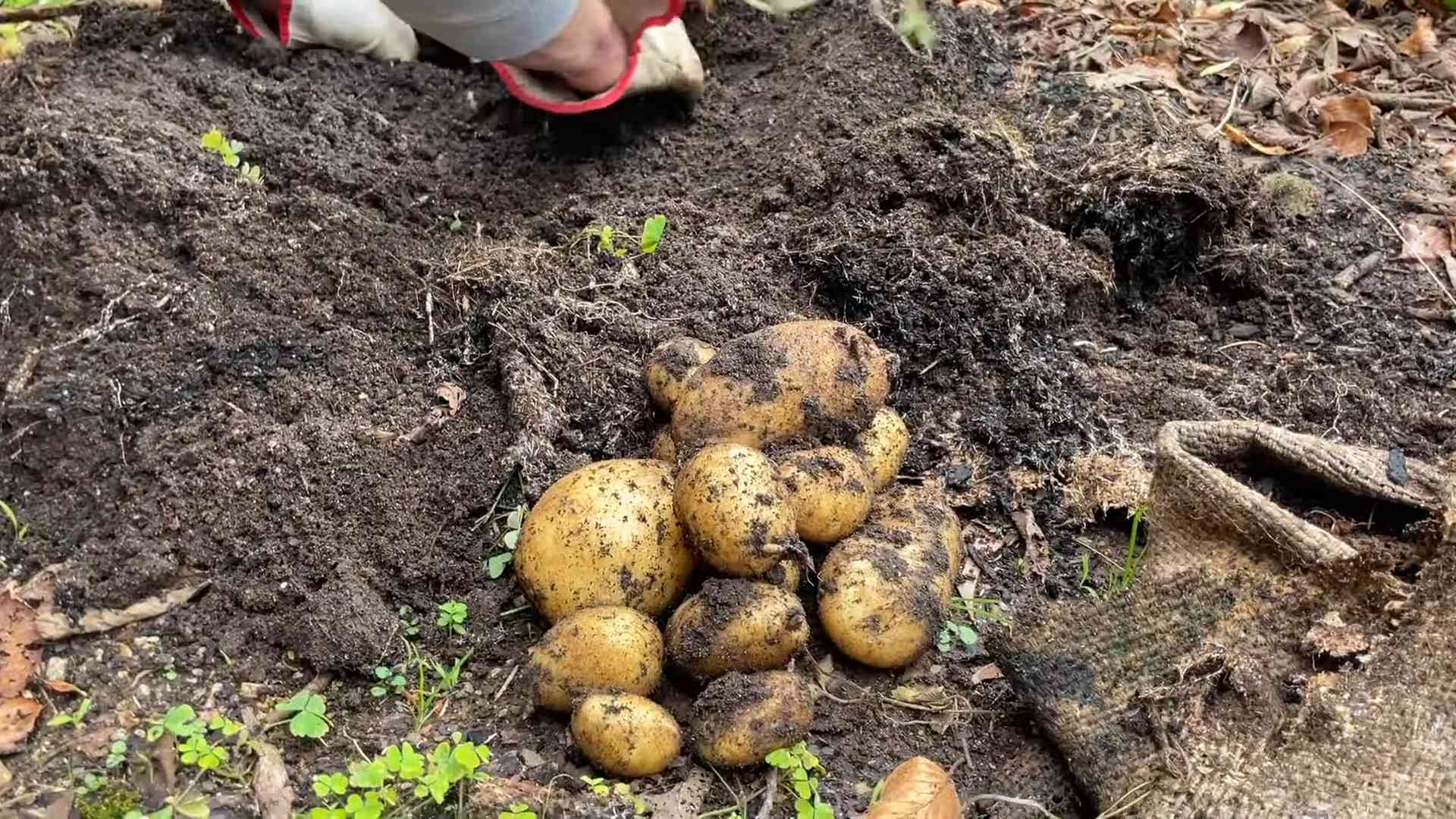
Planting Potatoes in Grow Bags: A Beginner’s Guide
Hey there, fellow garden enthusiasts! I’m so excited to share my experience with growing potatoes in grow bags. It’s a fantastic method, especially if you’re short on space or have poor soil. Trust me, even if you’re a complete newbie, you can totally nail this! Let’s dive in!
Why Grow Potatoes in Grow Bags?
Before we get our hands dirty, let’s quickly chat about why grow bags are awesome for potatoes.
* Space-Saving: Perfect for balconies, patios, or small gardens.
* Improved Drainage: Grow bags prevent waterlogging, which potatoes hate.
* Easy Harvesting: No more digging around blindly! Just tip the bag over.
* Soil Control: You get to choose the perfect soil mix for your spuds.
* Mobility: You can move your potato plants to chase the sun or protect them from frost.
What You’ll Need
Okay, gather your supplies! Here’s what you’ll need to become a potato-growing pro:
* Grow Bags: I recommend 10-gallon grow bags or larger. Fabric grow bags are ideal because they allow for good aeration and drainage.
* Seed Potatoes: These are potatoes specifically grown for planting. You can find them at your local garden center. Choose a variety that suits your taste and climate. I personally love Yukon Gold for their creamy texture.
* Potting Mix: A well-draining potting mix is crucial. I like to use a mix of compost, peat moss (or coco coir), and perlite.
* Fertilizer: A balanced fertilizer (like 10-10-10) or a fertilizer specifically formulated for potatoes will give your plants a boost.
* Watering Can or Hose: For keeping your potatoes hydrated.
* Trowel or Small Shovel: For planting and adding soil.
* Optional: Potato fertilizer spikes, mulch (straw or hay).
Preparing Your Seed Potatoes
This step is super important! You want to encourage those little eyes (buds) on your potatoes to sprout before planting. This gives them a head start.
1. Chitting (Sprouting): About 2-3 weeks before planting, place your seed potatoes in a cool, bright location. An egg carton works great for this!
2. Encourage Sprouts: You’ll notice small green or purple sprouts (eyes) emerging from the potatoes. This is exactly what we want!
3. Cutting (Optional): If your seed potatoes are large (bigger than an egg), you can cut them into pieces, ensuring each piece has at least 2-3 eyes. Let the cut pieces dry for a day or two to prevent rotting. I usually don’t cut mine unless they are huge.
Planting Your Potatoes
Alright, let’s get planting! This is where the magic happens.
1. Fill the Grow Bag: Fill the grow bag with about 4-6 inches of your potting mix.
2. Place the Seed Potatoes: Place 2-3 seed potatoes on top of the soil, with the sprouts facing upwards. Space them evenly.
3. Cover with Soil: Cover the seed potatoes with another 4-6 inches of potting mix.
4. Water Thoroughly: Water the soil well, making sure it’s evenly moist but not soggy.
“Hilling” Your Potatoes
This is the key to getting a bountiful harvest! “Hilling” encourages the potato plants to produce more potatoes along their stems.
1. Wait for Growth: As your potato plants grow, they’ll start to emerge from the soil. Wait until the stems are about 6-8 inches tall.
2. Add More Soil: Add more potting mix to the grow bag, covering the stems up to about halfway. Leave the top leaves exposed.
3. Repeat: Continue this process every 2-3 weeks as the plants grow taller, always covering the stems with soil. This encourages more potato production along the buried stems. I usually do this until the grow bag is almost full.
Caring for Your Potato Plants
Now that your potatoes are planted, it’s time to give them some TLC.
1. Watering: Potatoes need consistent moisture, especially when they’re actively growing. Water deeply whenever the top inch of soil feels dry. Avoid overwatering, as this can lead to rot.
2. Fertilizing: Feed your potato plants every 2-3 weeks with a balanced fertilizer or a potato-specific fertilizer. Follow the instructions on the fertilizer package. You can also use potato fertilizer spikes for slow-release feeding.
3. Sunlight: Potatoes need at least 6-8 hours of sunlight per day. Place your grow bags in a sunny location.
4. Pest Control: Keep an eye out for pests like aphids, potato beetles, and flea beetles. If you spot any, treat them with an appropriate insecticide or organic pest control method. I prefer using neem oil for most pests.
5. Mulching (Optional): Adding a layer of mulch (straw or hay) around the base of the plants can help retain moisture, suppress weeds, and keep the soil cool.
Harvesting Your Potatoes
The moment we’ve all been waiting for! Harvesting your potatoes is the most rewarding part.
1. Timing: Potatoes are typically ready to harvest about 70-90 days after planting, depending on the variety. You can harvest “new potatoes” (small, tender potatoes) earlier, about 60 days after planting.
2. Signs of Readiness: The foliage (leaves and stems) will start to turn yellow and die back. This is a sign that the potatoes are maturing.
3. Harvesting: The easiest way to harvest potatoes from a grow bag is to simply tip the bag over and gently sift through the soil. You can also reach into the bag and carefully pull out the potatoes.
4. Curing (Optional): If you plan to store your potatoes for a longer period, you can cure them by spreading them out in a cool, dark, and well-ventilated place for about a week. This helps to toughen the skins and prevent rotting.
Troubleshooting
Even with the best care, you might encounter a few challenges. Here are some common issues and how to address them:
* Potato Blight: This fungal disease can cause brown spots on the leaves and stems. Prevent it by ensuring good air circulation and avoiding overhead watering. If blight appears, remove affected foliage immediately and treat with a fungicide.
* Scab: This disease causes rough, scabby patches on the potato skins. It’s more common in alkaline soils. Amend your soil with sulfur to lower the pH.
* Pests: As mentioned earlier, keep an eye out for pests and treat them promptly.
* Lack of Potatoes: If your plants are growing well but not producing many potatoes, it could be due to insufficient sunlight, poor soil, or inadequate hilling. Make sure your plants are getting enough sun, fertilize regularly, and continue to hill as they grow.
Choosing the Right Potato Variety
Selecting the right potato variety is crucial for success. Here are a few popular choices:
* Yukon Gold: A versatile variety with a creamy texture and buttery flavor. Great for boiling, baking, and roasting.
* Red Norland: A red-skinned potato with a waxy texture. Excellent for boiling and salads.
* Russet Burbank: The classic baking potato with a fluffy texture.
* Fingerling Potatoes: These small, elongated potatoes come in various colors and have a unique flavor. Great for roasting and salads.
Consider your local climate and growing conditions when choosing a variety. Your local garden center can offer recommendations based on your area.
Tips for Success
Here are a few extra tips to help you grow the best potatoes ever:
* Use Certified Seed Potatoes: These are disease-free and will give you the best results.
* Don’t Overwater: Potatoes are susceptible to rot if the soil is too wet.
* Rotate Your Crops: Avoid planting potatoes in the same spot year after year to prevent soilborne diseases.
* Have Fun! Gardening should be enjoyable. Don’t be afraid to experiment and learn from your mistakes.
Growing potatoes in grow bags is a rewarding and satisfying experience. With a little bit of effort and these tips, you’ll be harvesting your own delicious potatoes in no time! Happy gardening!
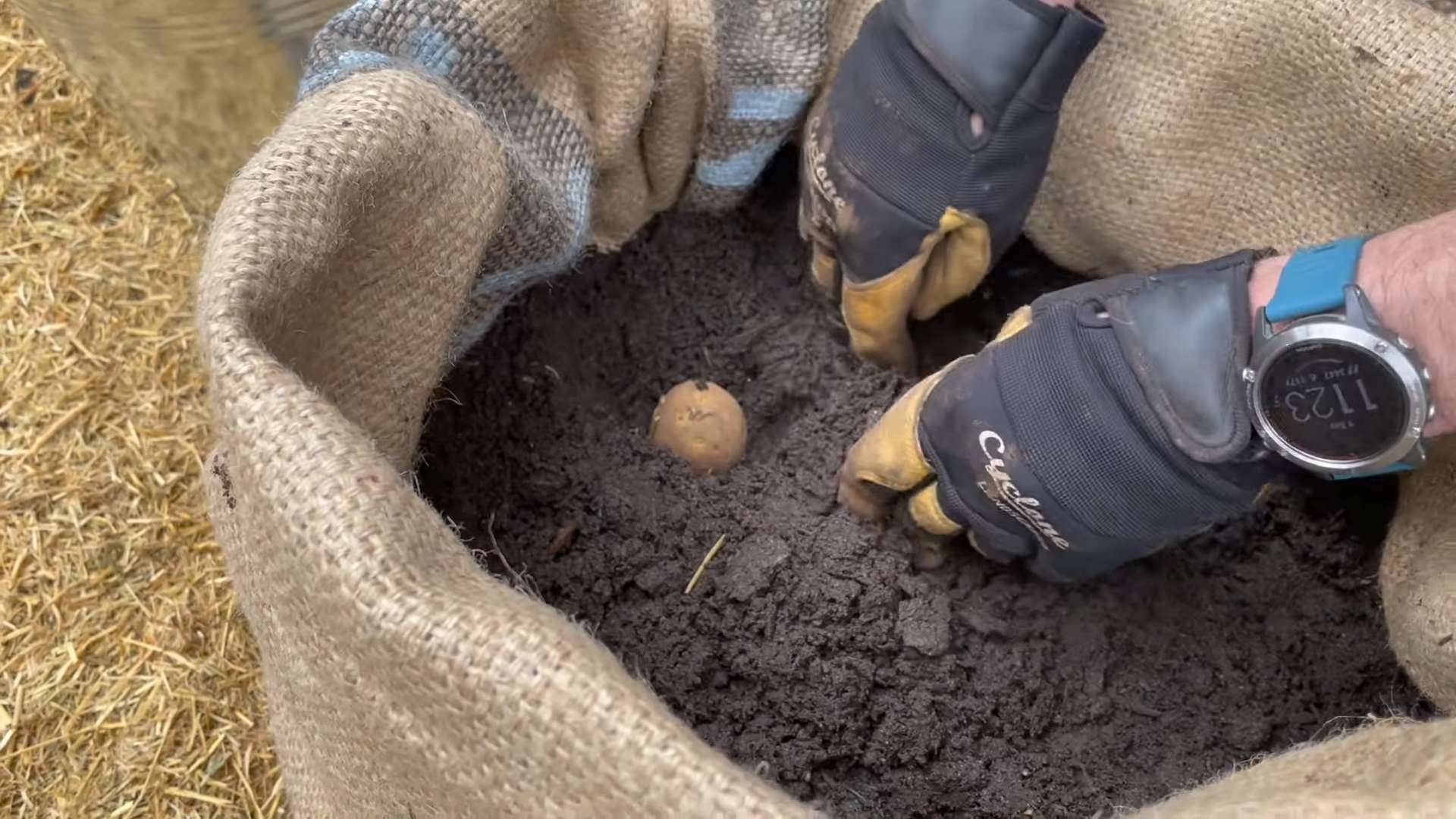
Conclusion
So, there you have it! Planting potatoes in grow bags is not just a gardening trend; it’s a game-changer for anyone looking to enjoy fresh, homegrown potatoes, regardless of their space constraints. We’ve walked through the simple steps, highlighting the benefits and addressing potential pitfalls. But why is this DIY trick a must-try?
Firstly, the convenience is unparalleled. Grow bags offer a portable potato patch, allowing you to move your plants to chase the sun or shelter them from harsh weather. This is especially crucial for those living in unpredictable climates or with limited sunlight exposure. Imagine being able to bring your potato plants indoors during an unexpected frost – a feat impossible with in-ground planting.
Secondly, the yield is often surprisingly high. The controlled environment within the grow bag, combined with the ease of “hilling” (adding more soil as the plant grows), encourages prolific potato production. You’re essentially creating the ideal conditions for your potatoes to thrive, resulting in a bountiful harvest that rivals, and sometimes surpasses, traditional methods.
Thirdly, and perhaps most importantly, harvesting is a breeze. Forget digging around in the dirt, hoping to unearth hidden treasures. With grow bags, you simply tip the bag over and sift through the soil, collecting your perfectly formed potatoes with minimal effort and zero damage. It’s like a potato treasure hunt where you’re guaranteed to find gold!
But the beauty of this method lies in its adaptability. Feel free to experiment with different potato varieties. From the classic Russet Burbank to the colorful Yukon Gold or the petite fingerling potatoes, each variety will bring its unique flavor and texture to your table. Consider adding companion plants like marigolds or basil to your grow bags to deter pests and enhance the overall health of your potato plants. You can also adjust the soil mix to suit your specific needs. For example, adding more compost will boost nutrient levels, while incorporating perlite will improve drainage.
And don’t limit yourself to just potatoes! Grow bags are fantastic for growing other root vegetables like carrots and beets, as well as herbs and even some smaller fruiting plants like strawberries. Once you’ve mastered the art of planting potatoes in grow bags, you’ll be amazed at the possibilities that open up.
We wholeheartedly encourage you to give this DIY trick a try. It’s a rewarding experience that connects you with nature, provides you with fresh, delicious food, and adds a touch of green to your living space. Whether you’re a seasoned gardener or a complete beginner, planting potatoes in grow bags is an accessible and enjoyable project that promises a satisfying harvest.
So, grab your grow bags, your seed potatoes, and your gardening gloves, and get ready to embark on a potato-growing adventure! And most importantly, don’t forget to share your experiences with us. We’d love to hear about your successes, your challenges, and any tips or tricks you discover along the way. Share your photos and stories on social media using #GrowBagPotatoes, and let’s build a community of grow bag gardening enthusiasts! Happy planting!
Frequently Asked Questions (FAQs)
What size grow bag is best for potatoes?
The ideal size grow bag for potatoes is typically between 10 and 20 gallons. A 10-gallon bag is suitable for smaller potato varieties or if you’re only planting a few seed potatoes. However, a 15 or 20-gallon bag provides ample space for larger varieties and allows for more extensive root development, leading to a potentially larger yield. Remember, potatoes need room to grow both vertically and horizontally, so a larger bag is generally better.
What type of soil should I use for planting potatoes in grow bags?
A well-draining, nutrient-rich soil mix is crucial for successful potato growth in grow bags. A good starting point is a mix of equal parts compost, potting soil, and perlite or vermiculite. The compost provides essential nutrients, the potting soil offers a good base for root growth, and the perlite or vermiculite improves drainage and aeration. Avoid using garden soil, as it can be too heavy and compact, hindering root development. You can also amend the soil with slow-release fertilizer to provide a steady supply of nutrients throughout the growing season.
How often should I water potatoes in grow bags?
Watering frequency depends on several factors, including the weather, the size of the grow bag, and the type of soil you’re using. Generally, you should water your potato plants when the top inch of soil feels dry to the touch. During hot, dry weather, you may need to water daily, while during cooler, wetter periods, you can reduce the frequency. Be careful not to overwater, as this can lead to root rot. Ensure that your grow bag has adequate drainage holes to prevent waterlogging. A good rule of thumb is to water deeply until you see water draining from the bottom of the bag.
How much sunlight do potatoes need in grow bags?
Potatoes thrive in full sun, meaning they need at least 6-8 hours of direct sunlight per day. If you don’t have a spot that receives full sun, try to find the sunniest location possible. You can also supplement with grow lights if necessary, especially if you’re starting your potatoes indoors. Insufficient sunlight can result in weak, leggy plants and a reduced yield.
How do I “hill” potatoes in grow bags?
Hilling is the process of adding more soil around the potato plants as they grow. This encourages the plants to produce more potatoes along the buried stem. When your potato plants are about 6-8 inches tall, add a few inches of soil around the base of the plants, leaving the top few leaves exposed. Repeat this process every few weeks as the plants continue to grow, until the grow bag is almost full. This technique maximizes potato production within the limited space of the grow bag.
When is the best time to harvest potatoes from grow bags?
The harvesting time depends on the potato variety and your desired size. “New potatoes,” which are small and tender, can be harvested about 7-8 weeks after planting. For mature potatoes, wait until the foliage starts to turn yellow and die back, typically around 12-14 weeks after planting. To harvest, simply tip the grow bag over and sift through the soil to collect your potatoes.
Can I reuse grow bags for planting potatoes?
Yes, you can reuse grow bags for planting potatoes, but it’s important to clean them thoroughly before replanting. Remove any remaining soil and debris, and wash the bags with soap and water. You can also disinfect them with a diluted bleach solution to kill any potential pathogens. Allow the bags to dry completely before storing them or reusing them.
What are some common pests and diseases that affect potatoes in grow bags?
Common pests that can affect potatoes include aphids, potato beetles, and flea beetles. Diseases include early blight, late blight, and potato scab. Regularly inspect your plants for signs of pests or diseases, and take appropriate action if necessary. Organic pest control methods, such as neem oil or insecticidal soap, can be effective for controlling pests. Ensure good air circulation around your plants to prevent fungal diseases.
Can I grow potatoes in grow bags indoors?
Yes, you can grow potatoes in grow bags indoors, but you’ll need to provide them with adequate light and ventilation. Place the grow bags in a sunny window or use grow lights to provide at least 12-14 hours of light per day. Ensure good air circulation to prevent fungal diseases. Indoor potato growing can be a great option for those with limited outdoor space or who live in climates with short growing seasons.
What are the benefits of using grow bags compared to traditional in-ground planting?
Grow bags offer several advantages over traditional in-ground planting, including improved drainage, better aeration, portability, and easier harvesting. They also allow you to control the soil quality and prevent soilborne diseases. Grow bags are particularly beneficial for those with limited space or poor soil conditions.


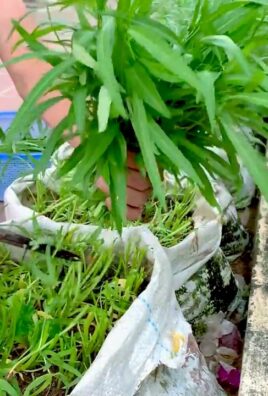
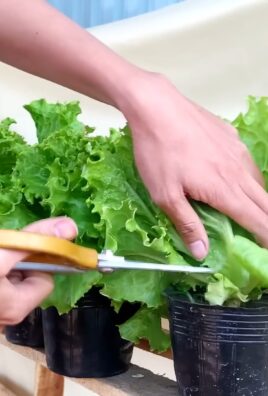
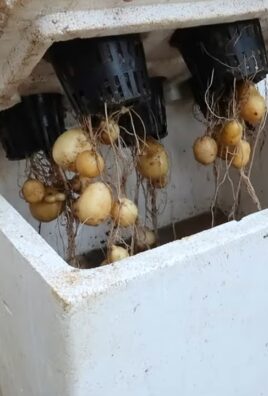
Leave a Comment